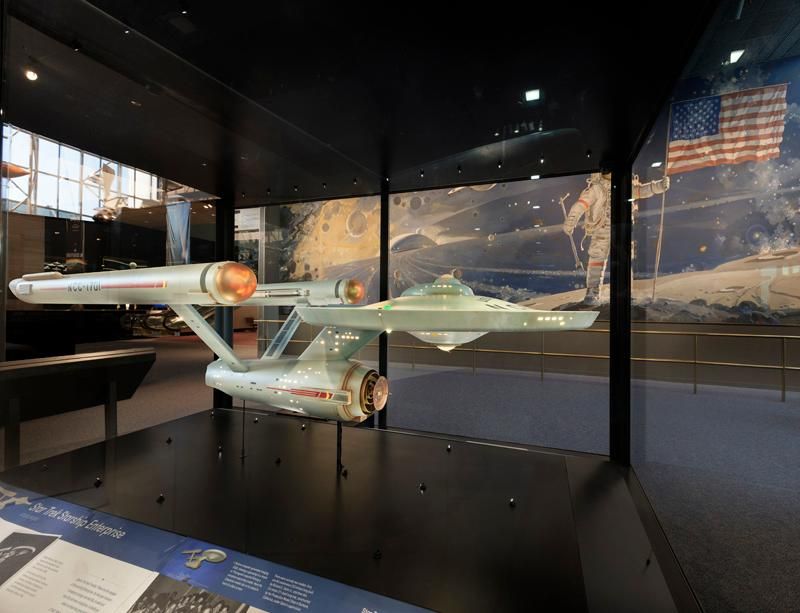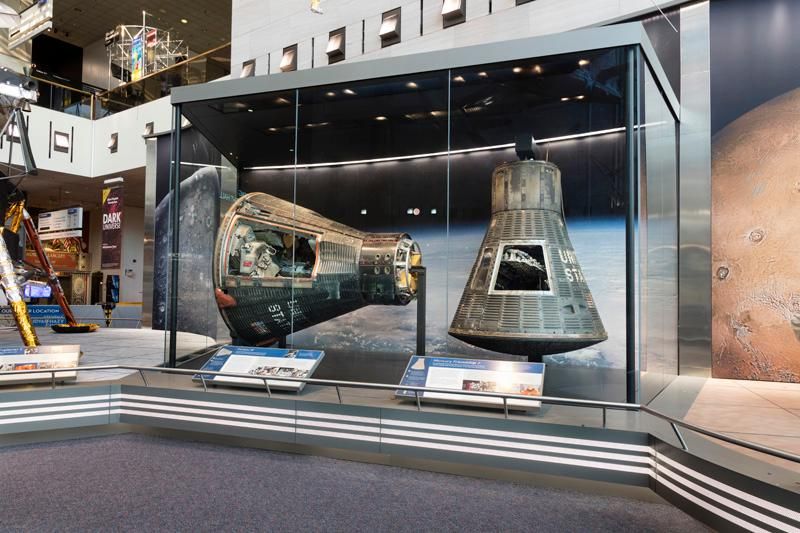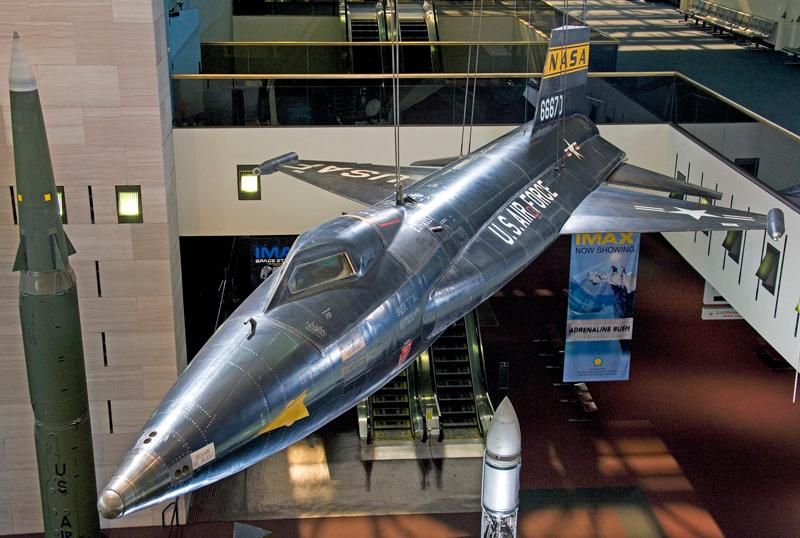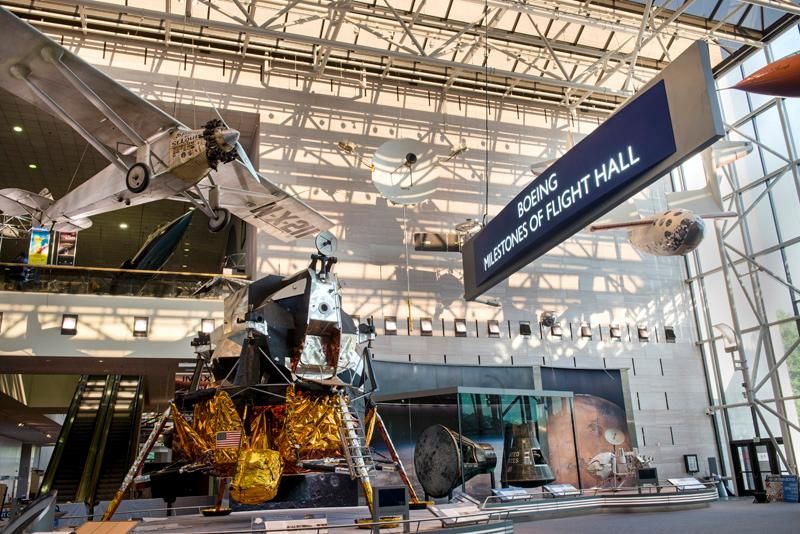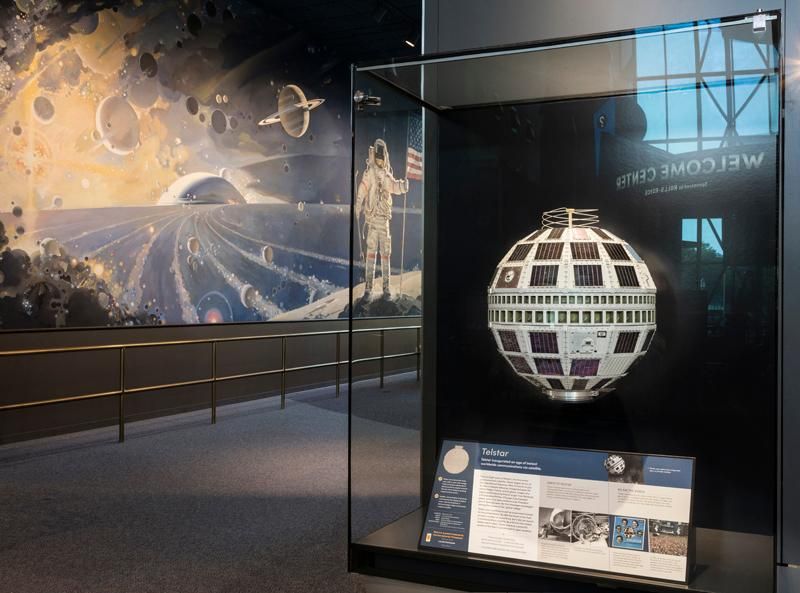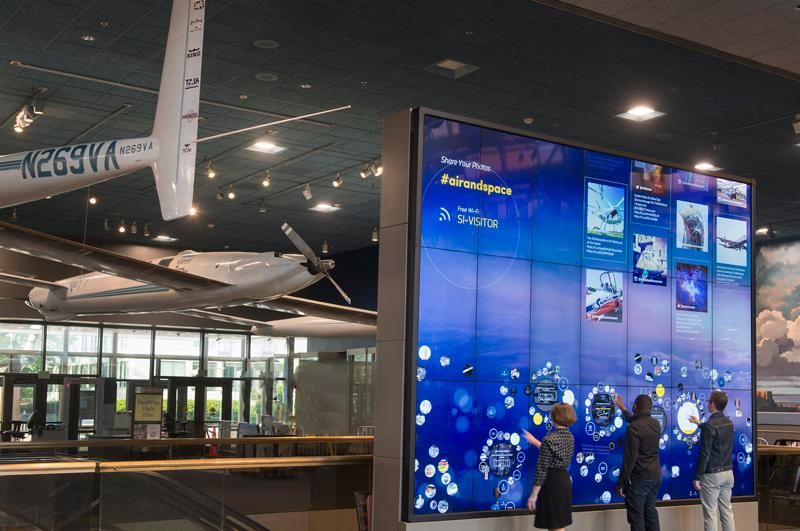Happy 40th Birthday, National Air and Space Museum!
After a two-year renovation, the Boeing Milestones of Flight Hall reopens July 1.
Forty years ago, the National Air and Space Museum opened on the National Mall; since then, more than 326 million people have visited. The Museum—both the Mall building and the Steven F. Udvar-Hazy Center in northern Virginia—holds the world’s largest collection of historically important aeronautical artifacts. Thanks to Boeing, the Mall location’s 19,000-square-foot entrance space has a new, streamlined look, just in time for the anniversary celebration.
“The heart of the Museum lives here,” said General Jack Dailey, at today’s press preview. Dailey, director of the Museum, said that the newly refurbished hall “will give visitors a richer experience,” and that they “will walk away with a deeper understanding of how spaceflight and aviation have affected their lives.”
Three components will help facilitate the experience: a 16- by 12-foot interactive media wall, a mobile app called GO FLIGHT, and a redesigned (after July 1) website. Visitors can use the app and wall to designate “favorite” artifacts, and create personalized tours of the Museum. The app also explores little-known connections between artifacts, and lets visitors follow topics of their choice and receive notifications when new material is available.
Scroll through the gallery, above, to see some of the artifacts in the Boeing Milestones of Flight Hall. The GO FLIGHT app will be available starting July 1 from the App Store and Google Play. And for those lucky people who live near Washington, D.C.: the Museum will be open all night on Friday, July 1st to celebrate its 40th anniversary.
